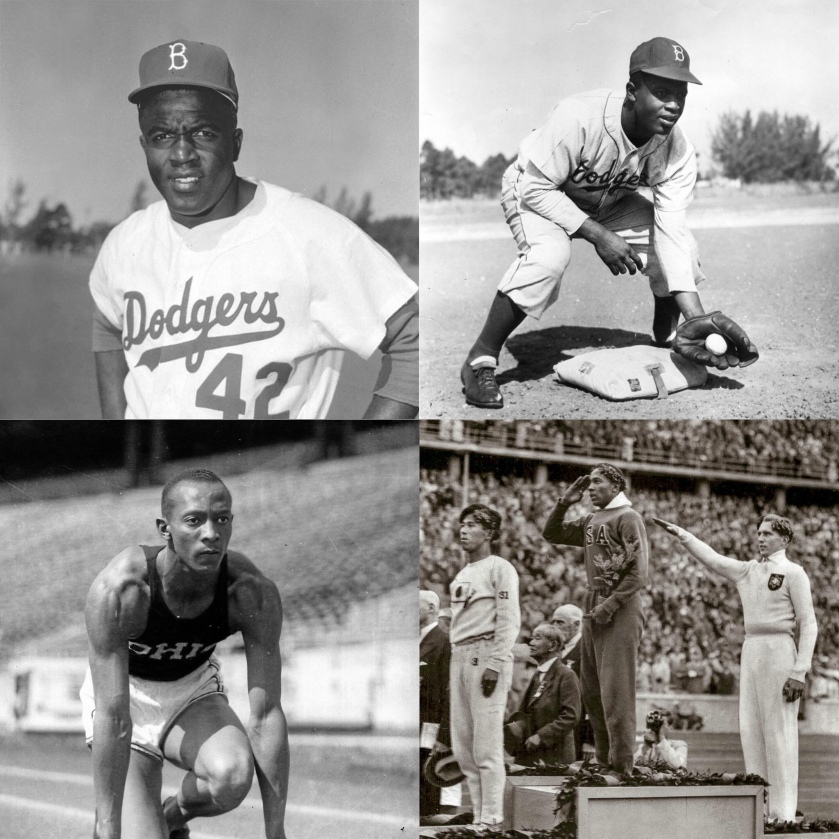Some sports that we have today were influenced by Native Americans centuries ago such as shinny, hoop and pole, lacrosse, and snow snake. Today you would recognize them as hockey, basketball or darts, lacrosse and a form of curling. These games were played by many different tribes around North America. Each game had different rules and equipment and varied from tribe to tribe. The progression of these sports had changed greatly and that’s why these sports are how they are today.
Hoop and Pole was played by many different tribes in different ways. It seemed as if all of the ways were similar and had the same concept (Native American Technology and Art). The Native Americans played this sport outside on a hard ground with grass which is what we call a field. The season they played hoop and pole was in the spring. There wasn’t too much equipment need for this sport besides four arrows or a pole, a bow for each person and a hoop that has a little hole right in the center of it (Native Games 1). The hoop might be open but they usually tied cords or a net across it (Culin 2). The hoop was sometimes decorated with paint or beads and was often made of corn husks, wood, stone, and iron (Culin 2). The hoop was also relatively small only three inches to a foot in diameter (Culin 2). The way the game goes is to split the teams up into two teams, there should be the minimum of two to the maximum of four people on a team. Back then the Native Americans didn’t have many rules for this game, the purpose of this game was suppose to be something fun for the tribes to do when they are bored and to help them with their archery skills. The Natives used their archery skills to hunt and look for food. The way the Native Americans played Hoop and Pole back then was simple, you had two teams and they stood thirty to forty feet away from each other, a player from one of the teams rolls the hoop while a player from the other team tries to make the pole through the hoop. If the team makes it through the hoop they get another chance and if they get it through the hoop again, every player on the opposite team has to throw pole over to them. The team without ammunition “arrows or poles” is the team that loses (Native Games 2). Hoop and pole measured good accuracy and helped them improve their hunting skills.
Shinny is a form of present day hockey. Men and women both played the game but they would never play together. The game was played mostly by the Chumash, who lived on the coast of California but was also played by some Canadian tribes as well (Santa Ynez Band of Chumash Indians 1). Native American tribes around Canada usually were the ones who played the game and that’s where it mainly originated from. There were little to no rules at all except for some minor precautions about checking the other players because they had no body protection. The rules of the game were that no parts of the body could touch the ball, they could play on any field, for example a football field or soccer field, the ball has to be tossed to start the game, and when they first started playing the game there were no resting periods and whoever scored first won the game (Native Games 1). The play area varied in size and location (Saskatchewan Indian Cultural Centre 1). One strange fact about shinny was that it didn’t even require a rink, which is why some hockey enthusiasts play because no skill was really needed either . The game could be played inside or outside and could be small or large. Which means the game could be played on ice or in a field. There are two different teams participating in the game and was played with six or seven players on each team (Gidén and Houda 3). If shinny is played on ice the players would wear skates and if the game wasn’t played on ice they would play without skates. The goals in the game would be made out of stones, poles, or goal cages and their size would also vary.
The game was mainly played on ice, but was considered field hockey. Shinny was played with a stick with a rounded end and a ball that was usually makeshift. During the time of the Great Depression they would use broomsticks, or tree branches and for a puck they would use tin cans, a piece of wood, or a frozen road apple which was sometimes horse droppings. The ball they used could also be stuffed full of hair and stitched up or they would just use any other small ball they could find. A kiddle is a term that was used for a ball or puck for the game, but was a small wooden ball or block used in the game of Shinny. Another term that was used was a Baddin which was a small wooden ball or block used in the game of Shinny. They wouldn’t always play to compete and to keep score, sometimes they would just play for recreational purposes and not keep score. Shinny was being played back as far as the 19th century (1800s). In the 19th century there were some well known people that had played the game such as Charles Darwin and Edgar Allan Poe. Shinty, bandy and shinny are all very similar games but with different games. Shinny, shinty and bandy are all different forms of present day hockey, same game and different name.
Lacrosse was the most popular sport played by the Native Americans. The game was most common from the tribes of the Atlantic seaboard and around the great lakes (Culin 1). It was played in the South, on the plains, in California and in the Pacific Northwest (Culin 1). The rules and the fields would vary depending on the tribes. The fields would vary from about 500 yards to several miles long (Claydon 1). The players varied from an estimate of 100 to 100,000 people and almost anyone could play (Claydon 1). The equipment used for lacrosse when the Native Americans played were originally just a wooden ball or buckskin filled with fur and a wooden stick with a net at one end, but then later changed to a yellow or white rubber ball and the sticks developed over time and varied by tribe (Claydon 1). Lacrosse was played for many of reasons, it was considered a sport that toughened up young warriors or it was played for religious reasons (Claydon 1). They were also very competitive and placed bets on the outcome (Claydon 1). They would either play village vs. village or tribe vs. tribe (Culin 1).
In the 1630s the Europeans were the first to see lacrosse being played by the Indians (Claydon 1). The European Jean de Brebeuf wrote about the game while watching it from the Huron Indians in 1636, which then led to calling the game “Lacrosse” (Claydon 1). After the game being called lacrosse a match between the Seneca and the Mohawks resulted in the creating of basic rules (Claydon 1). A demonstration was given by the Caughnawaga Indians about how to play lacrosse in Montreal (Claydon 1). By 1860 lacrosse became Canada’s national game (Claydon 1). By 1890 they became more precise on how many players they used and they came up with positions for each player (Claydon 2). For example in 1895 the amount of players on the field were ten players and no more and consisted of four forwards, four backs, center and goals (originally called “goalkeeper”). In 1901 there was still ten players and the positions were a full forward, second home, left attack, right attack, center, right defense, left defense, cover point, fullback and goals (Claydon 2). This game has progressed more and more throughout the years to get it to where the game it is now.
Snow Snake is played by the Native Americans in the winter. Usually in the west where it is cold enough to play (Culin 2). They would usually play outside in the snow. The rules varied more than the rest of the sports (Culin 2). The sliding darts or poles was either a few inches long or up to ten feet long (Culin 2). Today Snow Snake is known as snowboarding, and is usually played by men and most commonly played by girls (Culin 2). The game is played by four teams, called corners, and the game is divided into rounds. Each round that is played they get four throws. They craft about a forty inch wall of snow which can be extended easily beyond a quarter mile also it’s four inches in height. They also include a “pitch hole” which is a rounded groove along the top. Two points are awarded to the team of the person who made the farthest throw in the round, and one point is awarded for the second farthest throw. The play continues until one of the teams wins, by achieving a certain predetermined number of points usually seven through eleven points”(Wikipedia,1). The sticks are usually made out of wood, buffalo horns which are secured on a stick with frozen fat on it, but you first have to scrape the horns thin in order to freeze the fat onto the stick (Native Games 7). They called the sticks by names, one was called the long snake which is six feet in length, and they had one called the short snake which is only three feet in length. Today snow snake is recognized as curling which is still played today, even by Olympic athletes.
Native Americans played and created games before the games became advanced like they are today. These games have advanced so much over decades or even centuries. Rules, equipment, purposes, and community roles have changed greatly. Native Americans created these games for recreational and competitive reasons for war purposes as well. Some sports created by Native Americans were played for religious reasons. Sports played by the Native Americans were very basic, but everything has to start from the bottom in order to be built up.
Written by Emma Terhune, Emily Kelley, Alexus McCollough, and Hunter Greene
Works Cited
Culin, Stewart. “Native American Sports”. Encyclopedia.com. 1997. 16 Sept 2016. WEB.
www.encyclopedia.com/doc/1g2-236691260.html
“Federation of International Lacrosse”. Origin and History of lacrosse. E.d Jane Claydon.
Giden, Carl, and Patrick Houda. “TIMELINE – STICK AND BALL
GAMES.”http://www.sihrhockey.org/. N.p., n.d. Web. 3 Oct. 2016.
http://www.sihrhockey.org/new/pdfs/sihr_timeline_1_%20Preface.pdf.
“History of Native American Gaming.” History of Native American Gaming. Santa Ynez Band of
Chumash Indians, n.d. Web. 05 Oct. 2016.
http://www.santaynezchumash.org/gaming_history.html.
“Native Games.” Manataka American Indian Council. N.p., n.d. Web. 4 Oct. 2016.
https://www.manataka.org/page184.html.
“Netted Hoop & Pole Game.” Native American Technology and Art. Tara Prindle, n.d. Web. 30 Oct. 2016. www.nativetech.org/games/hoop&pole.html.
Skirst@syracuse.com, Sean Kirst |. “Snow Snake: At the Onondaga Nation, Children Learn an
Ancient Game (video).” Syracuse.com. Syracuse Media Group, 24 Mar. 2014. Web. 05
Oct. 2016.
<http://www.syracuse.com/kirst/index.ssf/2014/03/snow_snake_at_the_onondaga_nation_children_learn_an_ancient_game.




